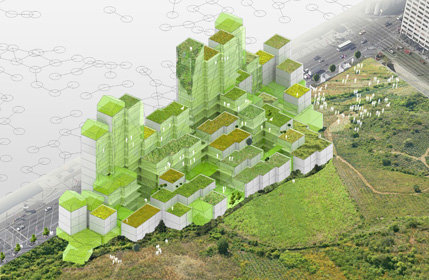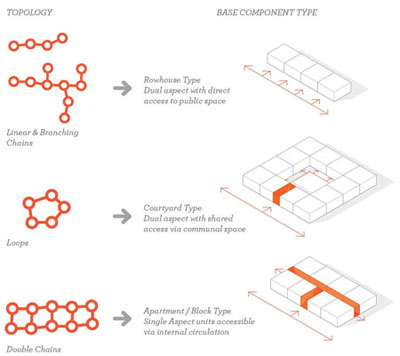Our built clusters display unique internal and external characteristics. Internally, within the clusters, are dwellings, greenhouses and mixing spaces in a gradient of public/private-ness of each. Externally, the clusters are situated uniquely between two distinct networks, urban and agricultural. The unique configuration suggests new architectural typologies.
Cluster analysis
Topological analysis, at the cellular level, informs components and rules for a new type of Collective Form. Adjacent dwellings and greenhouses are detected and sorted in clusters. Inside the clusters, connections are made between the units, saved into lists, and further organized by their topological types.
Topology of dwellings and greenhouse clusters.
Base Components
Topological types inform the differentiation of dwellings into base components, related to familiar dwelling types found in urban environments. Linear chains suggest individual direct access, and dual aspect, resembling a row-house type. Double chains provide access through internal corridors with single aspect units, such as those found in apartment/block buildings. Loops suggest a courtyard type, which can be further differentiated as single or dual aspect arranged in a courtyard configuration.
Dwelling cluster topology is translated into familiar base component types.
The relationship of these base components to productive units further differentiates them. Productive units can be public, communal (semi-private) or private based on scale, topology, and adjacency to networks.
In section, topology suggests differing types of vertical circulation, new communal spaces and tall public/semi-public atrium-like greenhouse volumes.
Vertical Topology informs sectional opportunities.


![120106 - Topology [REV 5-1] 120106](http://sitedev.edibleinfrastructures.net/wp-content/uploads/2011/09/244_0191.jpg)

